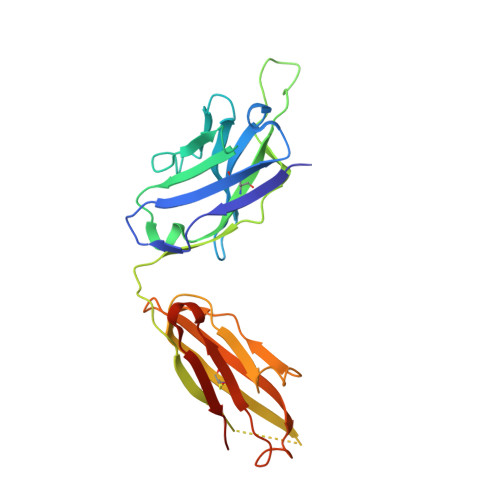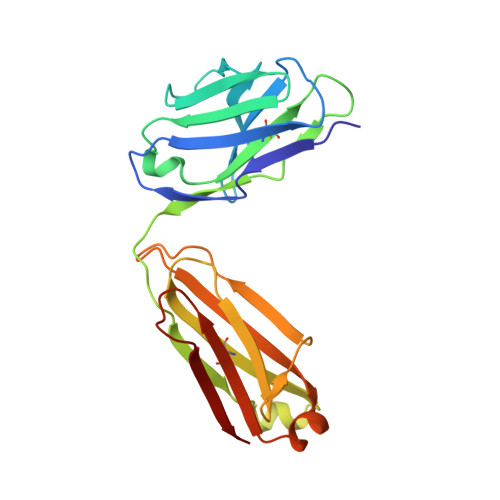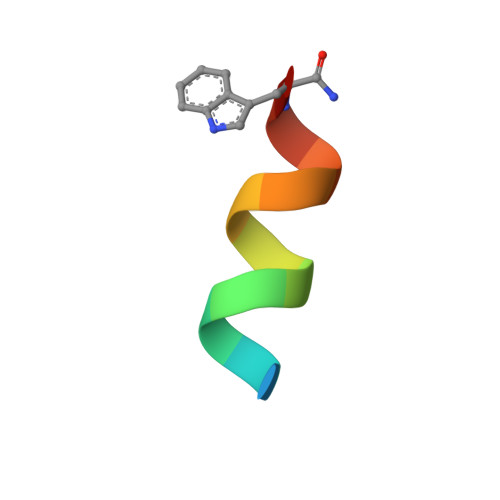Initiation of immune tolerance-controlled HIV gp41 neutralizing B cell lineages.
Zhang, R., Verkoczy, L., Wiehe, K., Munir Alam, S., Nicely, N.I., Santra, S., Bradley, T., Pemble, C.W., Zhang, J., Gao, F., Montefiori, D.C., Bouton-Verville, H., Kelsoe, G., Larimore, K., Greenberg, P.D., Parks, R., Foulger, A., Peel, J.N., Luo, K., Lu, X., Trama, A.M., Vandergrift, N., Tomaras, G.D., Kepler, T.B., Moody, M.A., Liao, H.X., Haynes, B.F.(2016) Sci Transl Med 8: 336ra62-336ra62
- PubMed: 27122615
- DOI: https://doi.org/10.1126/scitranslmed.aaf0618
- Primary Citation of Related Structures:
5DD0, 5DD1, 5DD3, 5DD5, 5DD6 - PubMed Abstract:
Development of an HIV vaccine is a global priority. A major roadblock to a vaccine is an inability to induce protective broadly neutralizing antibodies (bnAbs). HIV gp41 bnAbs have characteristics that predispose them to be controlled by tolerance. We used gp41 2F5 bnAb germline knock-in mice and macaques vaccinated with immunogens reactive with germline precursors to activate neutralizing antibodies. In germline knock-in mice, bnAb precursors were deleted, with remaining anergic B cells capable of being activated by germline-binding immunogens to make gp41-reactive immunoglobulin M (IgM). Immunized macaques made B cell clonal lineages targeted to the 2F5 bnAb epitope, but 2F5-like antibodies were either deleted or did not attain sufficient affinity for gp41-lipid complexes to achieve the neutralization potency of 2F5. Structural analysis of members of a vaccine-induced antibody lineage revealed that heavy chain complementarity-determining region 3 (HCDR3) hydrophobicity was important for neutralization. Thus, gp41 bnAbs are controlled by immune tolerance, requiring vaccination strategies to transiently circumvent tolerance controls.
Organizational Affiliation:
Duke Human Vaccine Institute, Duke University School of Medicine, Durham, NC 27710, USA.
















